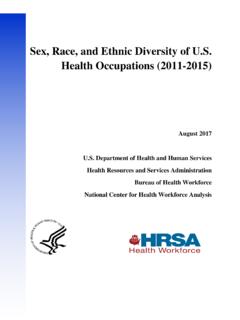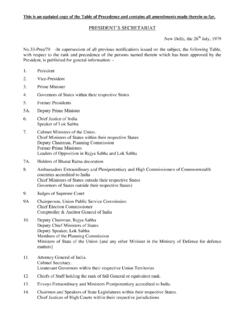Transcription of Intimate Partner Abuse and Relationship Violence
1 Intimate Partner Abuse and Relationship Violence This document was developed by the Intimate Partner Abuse and Relationship Violence Working Group. The working group was comprised of members from the following divisions: Division of Family Psychology (Division 43), Society for the Psychology of Women (Division 35), Society for the Psychological Study of Lesbian, Gay, and Bisexual Issues (Division 44), Society for the Psychological Study of Ethnic Minority Issues (Division 45), and Society for the Psychological Study of Men and Masculinity (Division 51). This document was developed as an interdivisional grant project, funded by the Committee on Divisions/APA Relations (CODAPAR). Its contents are derived solely from the Working Group on Intimate Partner Abuse and Relationship Violence and do not reflect policies or positions of the American Psychological Association.
2 Intimate Partner Abuse and Relationship Violence How to use this guide: Dear Colleague: This publication is designed to promote education about Partner Abuse and Relationship Violence . It represents our recommendation to faculty members who would like to develop courses focused on Partner Violence . Additionally, for those faculty members who would like to merely add information about Partner Violence to their existing courses, the present information will be useful. Students who will be working in the mental health field will undoubtedly encounter issues of Partner Abuse and Relationship Violence , whether they recognize such Violence or not. Consequently, learning about issues of prevalence, theories, how to detect such Abuse across differing communities (including ethnic minority and gay/lesbian/bisexual communities), the consequences of Partner Violence , strategies for prevention, forensic issues, and therapeutic interventions and services are included in this document.
3 Publication of this booklet has been sponsored by the Committee on Divisions and the American Psychological Association Relations (CODAPAR). The divisions involved in the development of this booklet/curriculum are the Division of Family Psychology (Division 43), the Society for the Psychology of Women (Division 35), the Society for the Psychological Study of Lesbian, Gay, and Bisexual Issues (Division 44), the Society for the Psychological Study of Ethnic Minority Issues (Division 45), and the Society for the Psychological Study of Men and Masculinity (Division 51). The members are shown below: Intimate Partner Abuse and Relationship Violence Working Group Chair: Michele Harway, Members: Robert Geffner, Division 43 David Ivey, Division 43 Mary P.
4 Koss, Division 35 Bianca Cody Murphy, Division 44 Jeffery Scott Mio, Division 45. James M. O Neil, Division 51 Thank you for your interest in including Partner Abuse and Relationship Violence in your curriculum. Please feel free to share this publication with others. 1 History of the Project In June of 1999, the CODAPAR of the American Psychological Association awarded an interdivisional grant to a group comprised of representatives from Divisions 43, 35, 44, 45 and 51 to develop a curriculum on Partner Abuse and Violence . Then President-elect of Division 43 (Family Psychology), Michele Harway, , had written the grant application in collaboration with presidents-elect of the other four divisions; at that time this included Phyllis Katz, , of Division 35 (Women), Esther Rothblum, , of Division 44 (Lesbian, Gay and Bisexual), Joseph Trimble, of Division 45 (Ethnic Minorities) and Michael Andronico, of Division 51 (Men and Masculinity).
5 Following the official awarding of the grant, each division nominated at least one representative to form the core work group. In August, 2000, the outline of the curriculum was presented at the annual convention of the American Psychological Association in Washington, It was also presented in September, 2000 at the 5th International Conference on Family Violence in San Diego, CA. Subsequent to revisions and input from other experts on Partner Violence , the curriculum was finalized; the revised outline was presented at the annual convention of the American Psychological Association in San Francisco, August, 2001. This curriculum is not the only effort sponsored by the American Psychological Association (APA) that focuses on interpersonal and Relationship Violence .
6 Since 1988, APA has appointed various task forces dealing with some aspect of interpersonal Violence , including the Child Abuse and Neglect Working Group, the Task Force on Male Violence Against Women, and Violence Against Children in the Family and the Community. In 1994, the APA Taskforce on Male Violence Against Women issued its report, (No Safe Haven: Male Violence Against Women at Home, Work, and in the Community). Also in 1994, the APA Presidential Task Force on Violence and the Family was appointed, and a report was published by APA in 1996 ( Violence and the Family). These reports are good resources for this curriculum. Subsequently, an Ad Hoc Committee on Legal and Ethical Issues in the Treatment of Interpersonal Violence was appointed to specifically address some of the forensic and risk management issues involved in these situations.
7 Two pamphlets were published in 1996 and 1997 that are good resources: Potential Problems for Psychologists Working with the Area of Interpersonal Violence , and Professional, Ethical and Legal Issues Concerning Interpersonal Violence , Maltreatment, and Related Trauma. Various Guidelines have also been published in APA journals that deal with this topic, and they are referenced throughout this guide. Most of the task forces and committees have recommended that graduate training and continuing education for psychologists concerning family Violence be mandated or strongly urged in all states. The present document helps meet the need for a curriculum. Note: We gratefully acknowledge the input of Janis Sanchez, , Guy Seymour, and Yolanda Flores, 2 Training Curriculum in Relationship Violence I.
8 Introduction Relationship Violence , including physical, sexual, and psychological Abuse , affects many millions of Americans. A US Department of Justice report of findings from the National Violence Against Women Survey involving 16,000 interviews (Tjaden & Thoennes, 1998) estimated that almost 2 million people are victimized in a 12 month period The study estimates that there are close to 9 million incidents of Violence annually. Over one-third of the rapes and close to half of the physical assaults of women result in injuries. About 1 in 5 male victims is injured. Other studies indicate that among women victims, 76% were assaulted by an Intimate Partner as were 18% of male victims (Tjaden & Thoennes, 1998).
9 A third of abusive incidents took place between relatives, and more than half were between spouses or ex-spouses. Partner Abuse is found in every ethnic group in the United States. A second report from at survey devoted to Intimate Partner Violence reported that (Tjaden & Thoennes, 2000), 1 out of every 5 women reported having been assaulted by an Intimate Partner at some time in her lifetime, versus 1 out of every 14 men. In the previous 12 months, million women and 835,000 men had been physically assaulted by an Intimate Partner . However, women were 7 to 14 times more likely to experience serious acts of Partner Violence , and were significantly more likely to sustain injuries than men who were victims of Intimate Violence .
10 Thus, it is important to distinguish between acts of aggression and those of Abuse . Abuse usually includes an ongoing pattern of behavior, attitudes, and beliefs in which a Partner in an Intimate Relationship attempts to maintain power and control over the other through the use of psychological, physical and/or sexual coercion. Abuse usually produces fear and trauma in those being victimized, whereas isolated aggressive acts may not. With sexual assault, even one sexual aggression can produce fear of rape and fear of men for life. Until recently most studies of Partner Violence have been almost exclusively of heterosexual partners, with only limited information about prevalence/incidence of Partner Violence among gay, lesbian, bisexual and transgendered people.















